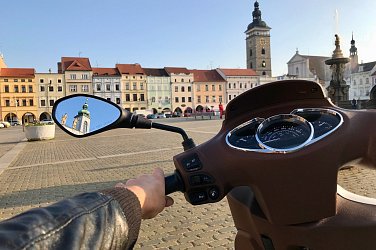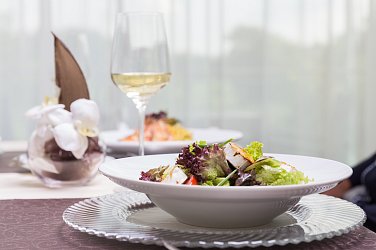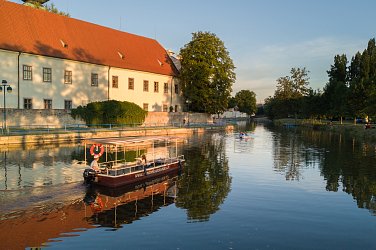ABOUT THE CITY
King Ottokar II of Bohemia founded the city of České Budějovice at the confluence of the Malše and Vltava rivers in 1265. The ground plan of the newly developed city was brilliantly surveyed by Burgrave Hirzo of Zvíkov, with a square 133 x 137 meters flanked by a checkerboard grid of streets. Two churches, numerous townhouses and the town hall were built around the square. The whole city was surrounded by walls with fortified towers and three city gates.
Immediately after its founding, České Budějovice became the political and economic capital of south Bohemia and a bulwark of royal power. King Charles IV boosted its privileges in the 14th century, and the city was a center of trade and crafts. The wealth České Budějovice became even greater thanks to silver mining and minting in nearby Rudolfov.
The fortified city was immune to Hussite pressure, and its economic upswing was only harmed by the Thirty Years’ War and a large fire in the second half of the 17th century. The city’s renewal continued for decades in the Baroque style and changed its architectural character. In addition to secular buildings, a number of ecclesiastic structures and institutions were built, including the bishop’s residence.
The industrial advances of the 19th century brought many changes in transport and manufacturing. The first horse-drawn railroad car departed from České Budějovice to Linz in 1832, the very first of its kind on the European continent. The new factories included a pencil works, an enamel works, a tobacco factory, and breweries. Fortunately, the industrial development did not harm the historic city center.
The twentieth century brought far-reaching changes in all aspects of life. The city has numerous examples of modern 1920s and 1930s architecture. The population grew close to 100,000 in the late 20th century. The city is the seat of the University of South Bohemia, many professional schools, scientific institutions, the four-ensemble South Bohemian Theater, the South Bohemian Museum and other private museums and art galleries.
The most prominent businesses include the Budějovický Budvar and Samson breweries, Madeta dairy works, Koh-i-Noor Hardtmuth and Gama pencil works, and the Robert Bosch and Motor Jikov machine works.
The opening of the national borders led to a great boom in tourism, and we have much to offer our visitors. This includes not only prominent heritage sites in the city, but also cultural and sports events and shopping opportunities. You can top it all off with good food and a dewy glass of beer in a pleasant restaurant. Nature lovers will also find much to enjoy. České Budějovice is surrounded by a picturesque landscape of fishponds, rivers, forests and hills of the Blanský Les and the Novohradské Mountains. The area is studded with architectural gems such as the Hluboká Castle and the village of Holašovice, which is inscribed on the UNESCO World Cultural Heritage List for its vernacular Baroque architecture, as well as the city of Český Krumlov, only 20 kilometers away. Fancy a trip?
České Budějovice is a friendly and hospitable city. Come find out for yourselves.



